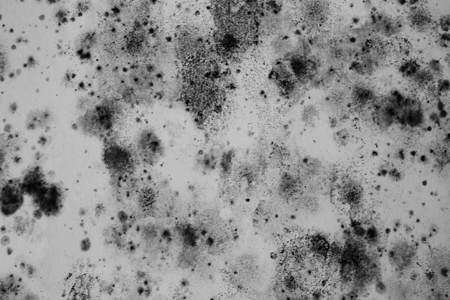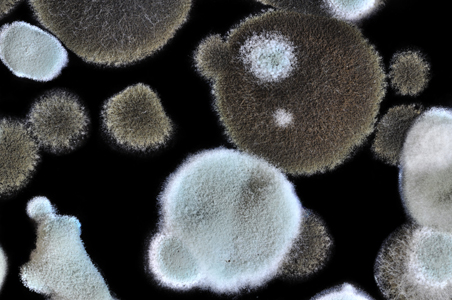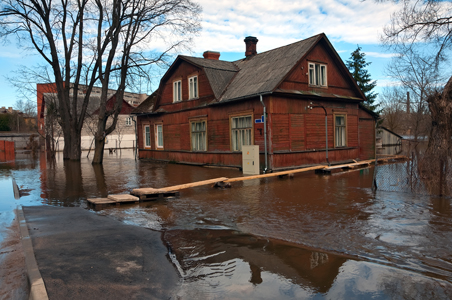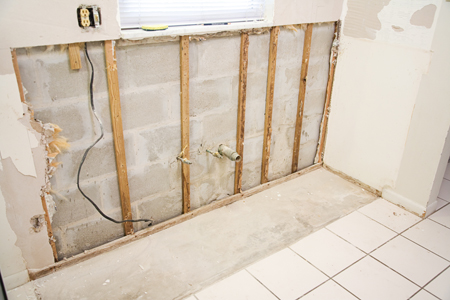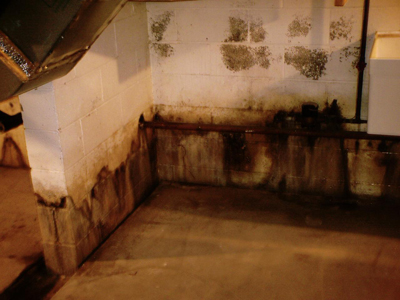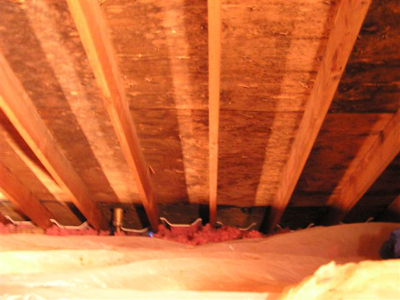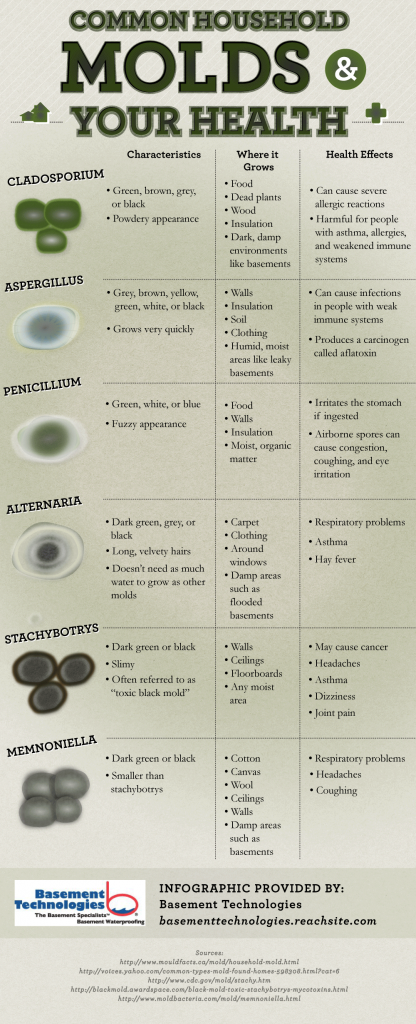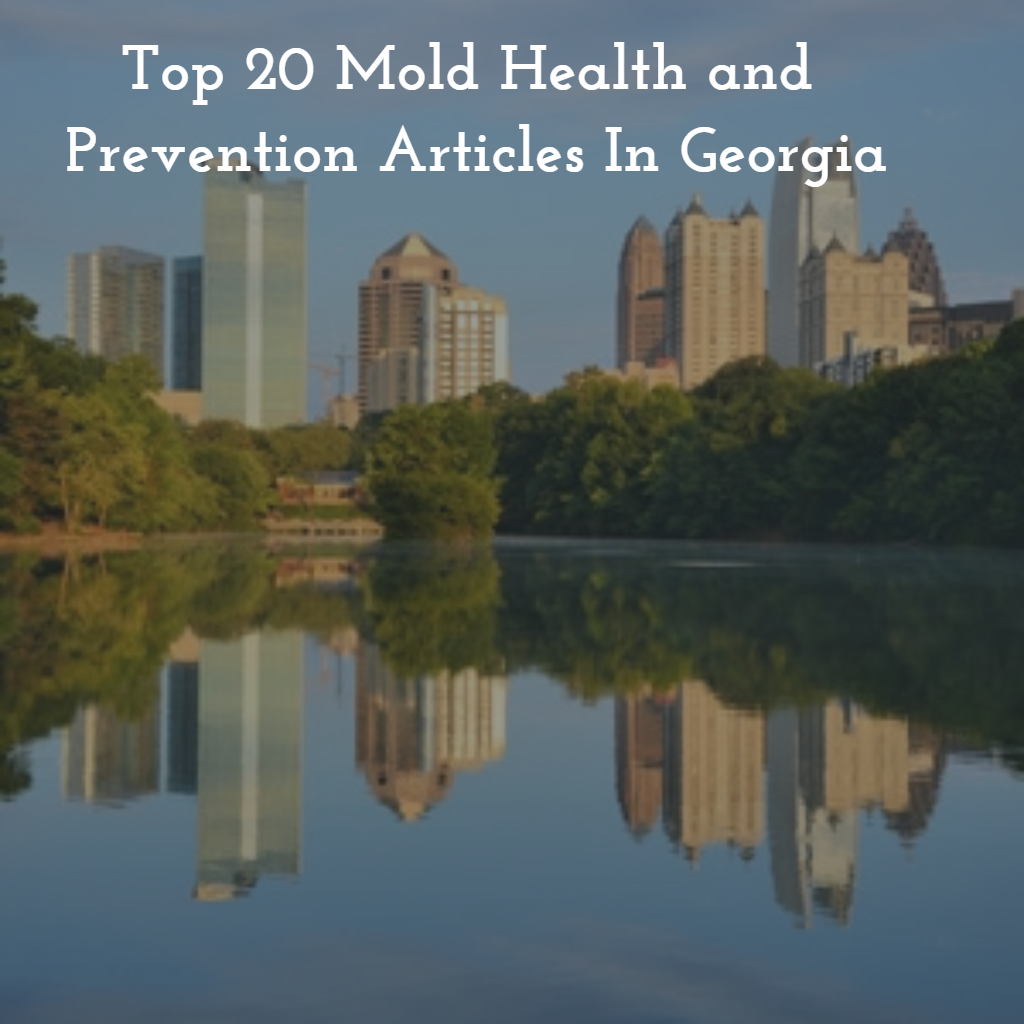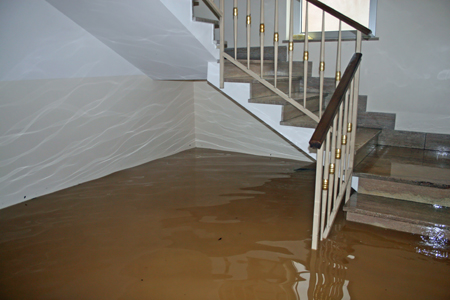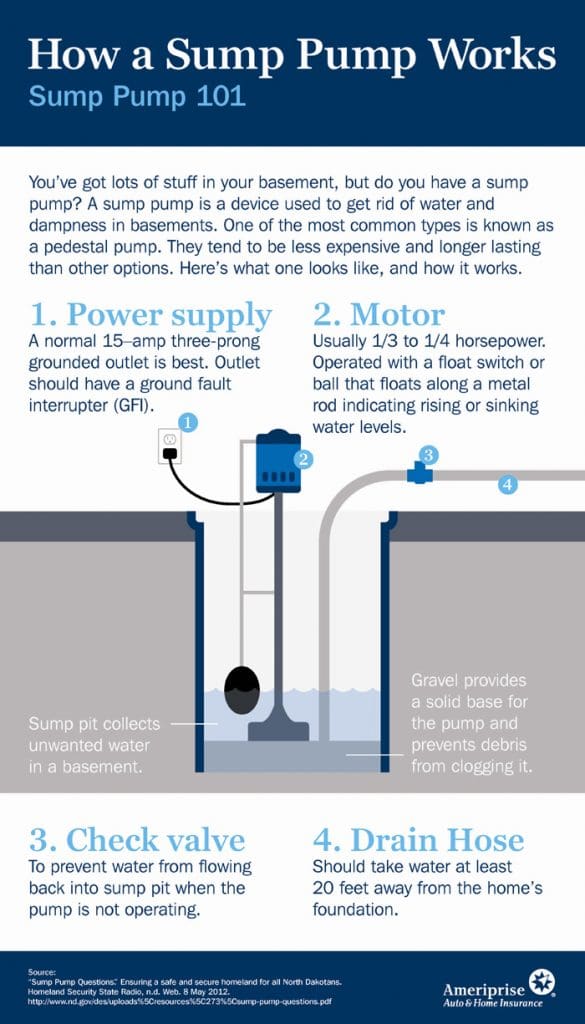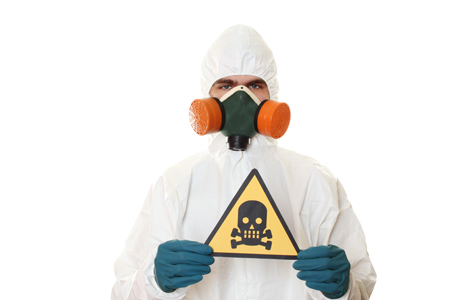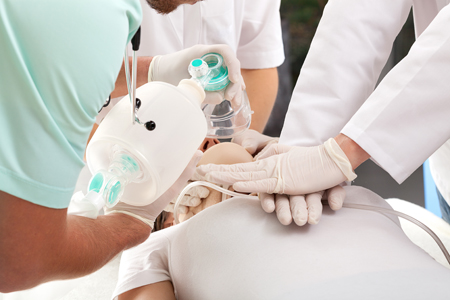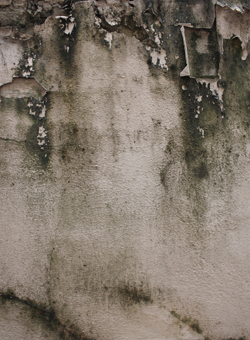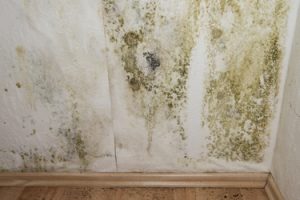
by Eric Brown | Apr 15, 2016 | Air Conditioning, Attic Mold, Basement Mold, Beware Of Mold When Buying A Home, Bleach and Mold, Can Black Mold Poison You?, Can Mold Kill?, Christmas Tree Mold, Chronic Inflammatory Response Syndrome (CIRS), Crawlspace Mold, Dead Mold Spores, Flood Clean Up, Health, How Toxic Is Mold?, Indoor Air Quality, Killing Mold, Mold and Asthma, Mold and Depression, Mold and Infants, Mold and Multiple Sclerosis, Mold and Parkinson's Disease, Mold and Pregnant Women, Mold and Sids, Mold and Sinusitis, Mold Facts, Mold In Apartment, Mold In The Bible, Mold Information, Mold Inspection, Mold Remediation, Mold Removal, Mold Removal Cost, Mold Risk During Renovation, Mold Sensitized Success Story, Questions and Answers, Sewer Backup, Sippy Cup Mold, Stachybotrys Black Mold, Top 15 Mold Prevention Tips, Toxic Mold, Water Damage Restoration
The Ultimate Mold Education Resource

The Ultimate Mold Education Resource
The goal of Mold B Gone is to educate our customers about mold. We strongly believe that an educated and informed consumer can make better decisions when they have concerns about mold.
Included in this article are 36 links to articles that will help you learn about mold.
Please bookmark this page because we will update it with new articles as they are researched and published.
If you have questions about mold removal, crawl space mold removal and encapsulation, other services we offer, and/or our 1 year up to 25 year guarantee, call us, 678-697-6267, or send us an e-mail. We look forward to serving you. 🙂
Mold Facts and Information (7 Articles)

Mold Facts and Information (7 Articles)
Priests were the equivalent of today’s mold inspectors. This article lists the three passages cited in Leviticus. Learn more!
Mold Fact 1: The Key Ingredient Mold Needs To Thrive Is Moisture. There are 9 more mold facts explained in this article. What do you think they are?
Top 4 Reasons Mold Grows In Your Attic! The purpose of this article is to explain why mold grows in your attic and prevention tips.
Top 3 Reasons Your Crawlspace Has High Humidity. This article explains why your crawlspace is humid, why this leads to mold and how you can fix the problem!
Steps Residents Can Take If They Have Mold In Their Apartment! This article explains what you can do if you find mold in your apartment. Learn more!
Top 10 Reasons Mold Is Scary!
Here are the top 10 reasons we believe that mold is scary. Enjoy!
This article provides you with information to help you determine if you have a mold problem and explains what you should and should not do if you do find mold.
Black Mold (2 Articles)

Black Mold (2 Articles)
Recently a news article featured a woman who believes that she was poisoned by toxic black stachybotrys mold. This article explores this topic further!
Stachybotrys is considered the king of molds because exposure to this toxic black mold causes 15 serious health conditions. Learn more!
Mold and Health (13 Articles)

Mold and Health (13 Articles)
Wondering if you are sensitive to mold? This article explains how to determine if you are mold sensitized, seeking treatment, and the next two steps to health!
This article explains why mold can be toxic, listing 10 specific health conditions. Learn more!
Potential Health Complications Mold Exposure Has On Pregnant Women and Infants! Questions answered about SIDS, asthma, miscarriage, and pulmonary hemorrhage.
This article article explains why mold grows on sippy cups, why it could make your child sick, and how you should properly clean the sippy cup!
Mold Remediation Improves Health! This article explains why, citing an interview with Jack and Helen Graham, a Mold Sensitized Success Story!
Could Some People Diagnosed With Multiple Sclerosis Actually Be Suffering From Mold Sickness? This article explains how and why. Learn more!
One in Three people get sick from their Christmas tree. This article explains why and what you can do to feel better. Learn more.
Why Do Some People Get Sick From Mold And Others Do Not? This article explains why 1 in 4 people have a genetic predisposition to mold illness.
This article explains why many suffering from CIRS are diagnosed with depression caused by mold. Both scientific and anectodal data are cited. Learn more!
Does Mold Cause Parkinson’s Disease? The purpose of this article is to explain why and how mold could be a possible cause of Parkinson’s Disease.
Top 3 Reasons Mold Sickness Is A Hidden Epidemic! You could be sick from mold and not even know it. This article explains why mold is a hidden epidemic!
37 million Americans suffer from sinusitis. Cause? This article lists the top 10 stats and facts citing MAYO clinic research that believes mold is the cause!
According to the CDC, rates of asthma among children in Georgia is 3% above the national average. Is mold a factor? This article cites stats and research!
Water Damage and Mold (4 Articles)

Water Damage and Mold (4 Articles)
Concerned about sewer backups? This article explains what causes sewers to backup and how you can prevent this from happening. Learn more!
Flood and water damage not only disrupts your life but can also be hazardous to your health! This article explains the top 3 hazards and prevention measures!
A flooded home or business is always a stressful situation. This blog provides you with the 3 steps required to reduce flood damage and most importantly, mold!
Water damage restoration restores a property to pre-loss condition after a flood. Check out the top 3 facts. Hint: Mold is not the only concern.
Mold Inspection and Prevention (7 Articles)

Mold Inspection and Prevention (7 Articles)
Mold growth can be prevented. This article list the top 15 mold prevention tips, to help you live in a mold free home.
Top 3 Reasons A Mold Inspection Is Essential! This article explains why you should submit an offer to purchase, subject to a home AND mold inspection!
Home improvement is an American tradition. But, did you know that 6 out of 10 homes could have mold? Renovating can cause serious problems. Learn more!
If you are concerned about mold in your basement or your basement was recently flooded, implement these 10 tips to prevent mold growth. Learn more!
If you or someone in your family suffers more frequently from colds or flus and you are not sure why, the cause could be poor indoor air quality. Learn more!
The purpose of this article is to explain how you air conditioner could be a source of mold contamination making you sick and what you can do to fix it.
Wonder what happens during a mold inspection? This article answers all your questions, listing the top 4 actions taken by reputable inspectors.
Mold Removal (3 Articles)

Mold Removal (3 Articles)
Have a mold concern, wondering what it will cost to remove? This article provides you with a detailed explanation of how mold removal cost is determined!
Mold sprays, bleach, biocides, and fungicides are an ineffective “short cut” to mold removal. Killing mold is not the answer! This article explains why.
Mold Removal Is Referred To As Mold Remediation Because Professionals Follow These 8 Steps. This article explains the steps and why you need to hire a pro!

by Eric Brown | Jan 25, 2016 | Basement Mold, Beware Of Mold When Buying A Home, Flood Clean Up, Health, Indoor Air Quality, Killing Mold, Mold Facts, Mold Information, Mold Inspection, Mold Remediation, Mold Removal, Mold Removal Cost, Questions and Answers, Top 15 Mold Prevention Tips, Toxic Mold, Water Damage Restoration
The Key To Mold Prevention Is Moisture Control!

The Key To Mold Prevention Is Moisture Control!
Mold spores are all around us, outside and indoors. Mold actually serves a purpose in our eco-system to consume dead organic materials.
Problems with mold arise indoors primarily because our homes are made of dead organic materials, meaning mold can grow anywhere in your home: on carpet, clothing, food, paper, and even in places you can’t see, such as the backside of drywall, areas inside walls around leaking or condensing pipes, and above ceiling tiles.
The simplest way to detect a mold problem is using your own senses. A musty odor is one indication. Not only is mold smelly, but can be many different colors from black and gray to orange and green. Watermarks on the ceiling and walls are also a telltale sign.
There are two key reasons, you should be concerned about preventing mold.
First, mold can be difficult and costly to remove.
Second, mold can produce allergens, irritants, and mycotoxins that can compromise your health. Because mold spores are very small and can easily be inhaled into the lungs, it is harmful to live in a home with high mold levels.

Mold Can Compromise Your Health
Mold growth can be prevented. Mold growing in your home requires moisture, warmth, and food. Depriving mold of any of these three items will stop it from growing, but it will not kill the mold that is already there. Mold spores will remain dormant, and if the moisture, warmth and food all reappear, mold will begin to grow again.
So what can you do if you’re concerned about mold growing in your home?
Listed below are the top 15 mold prevention tips.
The Top 15 Mold Prevention Tips
Mold Prevention Tip #1: Audit Your Home For Problem Areas!
It is difficult to mold-proof a home. However, you can take proactive steps to determine if you have problems that could lead to mold concerns.
Does the basement flood?
Do you notice frequent condensation on windows?
Is there a water stain on the ceiling from a persistent leak?
Is your basement damp?
Does water flow into your home’s foundation?
Addressing these questions may entail some upfront costs to fix, but it will be worth the investment in preventing future mold problems.
It is also important to note that if you are renovating your home or considering building a new home, that you may want to consider researching mold prevention products, including mold-resistant drywall and sheetrock, and mold inhibitors for paints.
Mold-resistant drywall is recommended because traditional drywall is made up of gypsum plaster core pressed between piles of paper, making it highly susceptible to mold. What this means is that in the presence of moisture and water, traditional drywall acts like a sponge absorbing the moisture leading to mold. Since traditional drywall is so porous, the only remedy to removing the mold is to tear out the drywall.
In contrast, mold-resistant drywall is paperless because the gypsum core is covered in fiberglass, meaning it is water-resistant and therefore less susceptible to mold growth. Moisture resistance drywall should be used in bathrooms, laundry rooms, basements, and kitchens because these areas of the home are most prone to moisture.
Mold Prevention Tip #2: Dry Wet Materials Immediately!
Mold can not grow without moisture and given the right conditions, it will begin growing within 24 to 48 hours.
With this in mind, tackle we areas right away.
- Don’t leave wet clothes or other items lying around the house, dry them outside if possible.
- Dry spills on carpet and floors.
- Dry your clothes after washing them by putting them in the dryer soon after the wash cycle is complete.
- If heavy rainfall causes seepage into your basement, make sure you dry the area promptly and contact a company to waterproof your basement to prevent future occurrences.
- If you experience a flood event, dispose of water-damaged carpets, bedding, and furniture if they can not be dried completely. Ideally, contact a restoration company to manage the clean up and drying process.
Mold Prevention Tip #3: Clean, Disinfect, and Dry Surfaces!
Vacuum and clean regularly to remove possible sources of mold growth.
Pay special attention to bathrooms and other areas of your home that are likely to generate a lot of moisture.
Non-porous surfaces (tile, stone, laminate) can be cleaned well with disinfectants and other cleaners.
Mold Prevention Tip #4: Repair Water Leaks!
Repair water leaks in your roof, windows, or any other part of the home as soon as possible.
Over time, constant leaks will cause moisture to buildup leading to mold growth.
Mold Prevention Tip #5: Use Area Rugs!
In portions of your home that are susceptible to moisture, use area rugs or washable floor surfaces rather than wall-to-wall carpeting. If you use area rugs, launder them periodically.
Mold Prevention Tip #6: Increase Air Flow!
Prevent moisture buildup by increasing the air flow within your home. Without good air flow, excess moisture can appear on your walls, windows, and floors.
To increase air circulation, open doors between rooms, move furniture away from walls, and open doors to closets.
In addition, open windows to allow fresh air to flow indoors.
If you don’t already have an HVAC system that has an outside air intake to bring in a steady stream of outside air, consider installing one.
Mold Prevention Tip #7: Proper Ventilation!
Routine daily activities such as cooking, taking a shower, and washing laundry can create excess moisture in your home.
Prevent moisture with proper ventilation.
Vent appliances that produce moisture (clothes dryers and stoves) to the outside, not to the attic or crawl space.
Use AC units and dehumidifiers (especially in humid climates), but make sure they don’t produce moisture themselves by checking them periodically and cleaning them as directed by the manufacturer.
Energy-efficient homes are prone to holding moisture inside. For this reason, it is important that you open windows or use exhaust fans in the kitchen and bathroom (especially when you are showering).
Mold Prevention Tip #8: Make Sure Your Storage Room Is Dry!
Most homeowners have a room where they store materials such as books, clothes, camping gear, and other occasional use items.
It is important that you check the humidity of your storage room and make sure that there is no excess moisture because most of the materials you are storing are ample sources of food for mold.
Ideally, use your garage, a well built shed that prevents moisture intrusion, or a dry storage unit and not the inside of your home. Make sure there is air circulating in the storage area as well.
Mold Prevention Tip #9: Control Humidity!
Clues that your home has excess humidity include condensation on windows, pipes, and walls. If you notice condensation, dry the surface immediately and address the source of moisture, and invest in a dehumidifier if necessary.
To measure the humidity levels in your home, purchase a moisture meter from your local hardware store.
Ideally, the indoor humidity of your home should be between 30 and 60 percent.
In the winter, it is recommended that humidity levels are below 40 percent to prevent condensation from appearing on the windows.
Mold Prevention Tip #10: Check Your Attic!
Make sure that your exhaust fans are not venting into the attic because this will create excess moisture and lead to mold.
Also, your attic needs ventilation as well, so check this.
Insulation is important, particularly in cooler climates because snow accumulation on the roof can lead to ice damning issues which will cause moisture issues.
Mold Prevention Tip #11: Check Your Crawl Space!
Most homes in the Southern United States have crawl spaces.
Crawl spaces are a breeding ground for mold because there is so much excess humidity.
Mold growth in the crawl space is a particular concern because it will also impact the indoor air quality of your home.
If you find excess moisture or mold issues in your crawl space, then the area should be cleaned properly and the mold removed. To prevent future mold issues, wall-to-wall guide, durable, 14 mil vapor barrier should be installed over the ground and up sidewalls to 6 inches below floor joists. Installation of a dehumidifier will also help control humidity.
Mold Prevention Tip #12: Prevent Basement Condensation!
The cool basement floor and walls can be a source of moisture build-up, leading to mold and that musty smell many encounter in their basements.
To prevent condensation and future moisture issues, improve air circulation, run a dehumidifier, and install a foundation drain.
Ideally, make sure the basement walls are insulated properly to keep the walls warm and limit condensation.
As a final note, if you find that there is moisture intrusion into your basement through seepage, consider hiring a contractor to water proof the area.
Mold Prevention Tip #13: Direct Water Away From Your Home!
One of the best methods to prevent seepage into your crawlspace or basement is to ensure that water around your home sufficiently slopes away from the foundation of your home.
Do not put gardens or plants too close to your foundation so that watering them could cause water to flow toward your house.
If you water your lawn with a sprinkler, make sure the water does not hit your house or the area next to the foundation.
Mold Prevention Tip #14: Keep Your Gutters and Downspouts Clear of Debris!
Debris in your gutters or downspouts could block the flow of water from your roof. To prevent water accumulation, clean your gutters regularly and have them inspected for damage. It is also a good idea to check your ceiling for water stains, particularly after heavy storms.
In addition, make sure the area under your downspouts is properly graded so that rainwater from the roof flows away from your foundation. If the water is not flowing away from the foundation, extend your downspouts.
Mold Prevention Tip #15: Check Your Plants For Mold!
Plants help keep your indoor air clean. Unfortunately, mold grows in the soil of house plants and can also grow on the leaves, leading to higher levels of mold spores in the home. To hinder mold growth in plant soil, add some Taheebo tea to your house plant water in a mild solution. The oil of this tree, which withstands fungi even in rain forests, helps hinder mold growth in plant soil and can be found at natural food stores.
Questions? Mold B Gone is here to help. We are mold removal and mold prevention specialists backing our services with a minimum guarantee of 1 year. Call 678-697-6267 or send us an e-mail.
The infographic below is an exceptional summary of mold. Enjoy!

Mold Summary

by Eric Brown | Jan 12, 2016 | Air Conditioning, Basement Mold, Beware Of Mold When Buying A Home, Bleach and Mold, Can Black Mold Poison You?, Can Mold Kill?, Chronic Inflammatory Response Syndrome (CIRS), Flood Clean Up, Health, Indoor Air Quality, Killing Mold, Mold and Asthma, Mold and Depression, Mold and Multiple Sclerosis, Mold and Parkinson's Disease, Mold and Sinusitis, Mold Facts, Mold Information, Mold Inspection, Mold Remediation, Mold Removal, Mold Removal Cost, Mold Risk During Renovation, Questions and Answers, Stachybotrys Black Mold, Toxic Mold, Water Damage Restoration
Top 20 Most Shared Mold Health and Prevention Articles In Georgia

Top 20 Most Shared Mold Health and Prevention Articles In Georgia
August, 2015, marked a historic month for Mold B Gone.
We launched this website, www.moldbgonega.com, dedicated to creating mold awareness for residents of Georgia.
Listed below are the top 20 articles, listed in the order of most viewed.
If you have questions or need help, the Mold B Gone Team looks forward to serving you. Call 678-697-6267 or send us an e-mail!
We have been serving Georgia since 2009 and have built a solid reputation in the state because of our expertise and knowledge, 1 year up to 25 year guarantee, and peace of mind we offer our customers.
Twenty Most Shared Mold Health and Prevention Articles In Georgia
- Are You Sick From Mold Because Of Your Genes?
- Top 10 Facts About Mold
- 7 Places Mold Hides In Your Home!
- Is Mold Sickness A Hidden Epidemic?
- Why Is Black Mold A Health Concern?
- Are Sinus Infections Caused By Mold?
- Can Toxic Black Mold Poison You?
- How Do I Know If Mold Is Making Me Sick?
- Are Dead Mold Spores Harmful?
- How Does Mold Cause Depression?
- Does Mold Cause Multiple Sclerosis?
- What Is The Link Between Mold and Parkinson’s Disease?
- Is Your Air Conditioner Making You Sick?
- 10 Tips To Prevent Basement Mold!
- Top 10 Reasons Mold Is Scary!
- The #1 Mistake Home Buyers Make!
- How Is Mold Removal Cost Determined?
- 8 Steps To Mold Remediation Success!
- What Is The Link Between Mold and Asthma?
- Top 3 Facts About Water Damage Restoration

by Eric Brown | Dec 13, 2015 | Flood Clean Up, Health, Indoor Air Quality, Mold Facts, Mold Information, Questions and Answers, Sewer Backup, Water Damage Restoration
Sewer Backup Causes and Prevention

Sewer Backup Causes and Prevention
A primary cause of a flooded basement is a sewer backup.
Sewer backups occur when sewage from sewer lines back up into your house or business.
Usually basements flood from sewer backups when the sewage water comes up from the drains.
This article will explain what causes sewer backups and how you can prevent them.
Causes of Sewer Backups
- Rainfall
- Tree Roots
- Sanitary Main
- Grease
- Toilet Paper and Foreign Objects
Rainfall
During heavy rainstorms, the excess water inundates public sewer systems with groundwater and stormwater flow entering the sewer lines. A sewer backup will occur because the sewer lines get too full and can not handle the overflow.
Tree Root Blockages
As trees and shrubs grow, the roots expand to seek more moisture. As the roots grow, they can crack the sewer line and eventually cause a blockage.
Sanitary Main Blockage
In some cases, a blockage can occur in a city sanitary main causing a back up into homes and businesses.
Grease
Another major cause of sewer backups occurs when animal fat is dumped down the drain. When the grease cools, it will attach itself to the walls of the sewer pipe, causing other objects to stick to the grease eventually leading to a blockage.
Toilet Paper and Foreign Objects
When too much toilet paper, paper products (paper towels, disposable/cloth diapers, and feminine products) or foreign objects are flushed down the toilet, they can get stuck when they meet a bend in the sewer line causing sewer waste to to stick to the objects, resulting in a blockage and eventually a backup.
How To Prevent Sewer Backups?

Sewage Backup Prevention Infographic
Dispose of Grease Properly
Do not pour cooking oil into your sink, use a heat resistant container and dispose of it properly.
Dispose Paper Products Properly
Since paper towels, disposable/cloth diapers, feminine products, and other small objects down the toilet do not break down quickly, leading to clogs, do not try to flush these items down your toilet.
Replace Pipes
Older homes are particularly susceptible to sewer backups because there are usually older trees and shrubs that have roots seeking more moisture leading to the eventual crack in a sewer line and blockage. To prevent this, you should cut the roots periodically and may want to consider replacing the line and tap pipes with plastic.
Proper Drainage
One of the most effective methods to prevent flooding is to ensure that there is proper drainage around your property. You want to ensure that there is a slope away from the property so water flows away. In addition, ensure that the downspout drains away from your property and periodically clean your eaves-troughs to prevent them from getting blocked.
Install Backflow Prevention Valves / Sump Pump
Backflow valves block the sewer line and prevent the flow of sewage backflows.
If your property is in a low lying location or near a river or lake, we strongly recommend that you install a sump pump. In addition to the utility during a heavy rain fall, sump pumps perform an important function during normal weather because they drain groundwater from under and around your basement floor. Ground water removal reduces the risk of basement floors cracking and shifting from the water pressure.
We recommend that you consult with your plumber for such an installation as it depends on your type of plumbing.

How A Sump Pump Works
Two Reasons Sewer Backup Prevention Is So Important
There are two key reasons you want to prevent sewer backups.
First, preventing excess moisture from entering your home is the key to preventing mold growth.
Second, sewer backups are worrisome because sewer water is category 3 water and contains harmful bacteria that is hazardous to your health.
According to IICRC S500 Standard 3rd Edition, there are over 120 different viruses that can be excreted in human feces and urine and find their way into sewage:
These can include Rotavirus, causing severe and sometimes life-threatening diarrhea in children, Adenoviruses, causing respiratory and eye infections, and Norovirus, a significant cause of gastric flu or stomach flu. There are highly infectious parasitic agents like Giardia and Cryptosporidium that can cause chronic and severe intestinal diseases in both children and adults. Bacterial pathogens in sewage can include Salmonella, Shigella and Escherichia coli. These gram-negative organisms contain endotoxins that are released at the time of cell death and destruction. Endotoxins can cause respiratory inflammation, airway restriction, create the potential allergic and infectious disease responses and when inhaled they may adversely influence the central nervous system.
Steps To Take When Your Sewers Backup
If you experience a sewer backup, take the following actions:
- Call your city’s Sewer Maintenance Division and ask them to check the public lines to ensure that they are not blocked.
- Call a Professional Plumber to have the sewer line cleared.
- Clean up the area. Call a professional Disaster Recovery Service like Mold B Gone that specializes in water damage restoration, mold removal, and prevention. We have protective gear and equipment to clean up the area properly and most importantly understand that to prevent excessive mold growth we must remove all the water and begin drying out the area using air movers and dehumidifiers. All contaminated material must be either disinfected or removed permanently. If you begin the clean up process yourself, follow these safety steps and use rubber gloves, boots, protective clothing, and a respirator.
- Call your insurance provider within 24 hours of the sewer backup to begin the claim process.
The first 48 hours are crucial to preventing mold. Questions? Call Mold B Gone, 678-697-6267 or send us an e-mail.

by Eric Brown | Nov 30, 2015 | Air Conditioning, Can Black Mold Poison You?, Can Mold Kill?, Flood Clean Up, Health, Indoor Air Quality, Killing Mold, Mold Facts, Mold Information, Mold Remediation, Mold Removal, Questions and Answers, Stachybotrys Black Mold, Toxic Mold, Water Damage Restoration
Can Mold Kill?

Can Mold Kill?
Recently a news article featured a woman who believes that she was poisoned by black mold.
After being exposed to black mold for four years in a friend’s house in Niagra Falls, Susan Crane-Sundell stated: “It’s very close to killing me now.”
Crane-Sundell began getting sick after about 18 months of living in the house. When she got sick, she saw a dozen doctors and underwent expensive medical tests. Recently, she found out that the cause of her sickness was black mold which has poisoned her system to the point that she is bed-ridden.
Can Toxic Black Mold Kill?
This is an interesting question and one that was posed this summer by a reporter in New Orleans, Jed Lipinski, NOLA.com Staff reporter | The Times-Picayune that published an article: Did a moldy building kill 4 New Orleans college professors?
The article poses this question because four SUNO professors, who died within three months of each other, all worked on the second floor of the Multipurpose Building on the SUNO campus:
- Marina Dumas-Hayes official cause of death: breast cancer recurrence;
- Felix James official cause of death: heart disease;
- Sudipta Das official cause of death: breast cancer recurrence;
- Guillarne Leary official cause of death: pulmonary embolism.
Officially, toxic mold is not linked to their deaths because the Centers for Disease Control states that there is no scientific evidence linking mold exposure to pulmonary embolisms, heart disease or breast cancer recurrence. In addition, according to the article:
No federal guidelines exist for what constitutes a safe quantity of mold, making it difficult for inspectors to know whether occupants of a building or home are at risk. Building managers say they often are forced to rely on occupant complaints to determine that a remediation was unsuccessful.
Lipinsky questions the official cause of the death for several reasons.
Background: Water Damage Lead To Significant Mold Infestation
After the levee breaches in late August, 2005, the Southern University of New Orleans (SUNO) campus was one of the hardest hit institutions. In fact, the campus was submerged under water for three weeks and the power plant was not functional, meaning the air conditioning in all 11 buildings was shut off. Power was not restored for two years.
In response, SUNO moved its faculty, students, and staff to temporary buildings that the Federal Emergency Management Agency (FEMA) provided. Efforts to renew SUNO stalled because initial plans to rebuild the campus in another location were rejected by FEMA due to a lack of funding. Conditions inside the 11 buildings continued to worsen as mold spread throughout because the air conditioning was not yet functional.
Three years later, in 2008, work began to clean up the affected buildings.
The Multipurpose Building, a two-story concrete structure, was flooded with 4.5 feet of water after the levee failures during Hurrican Katrina. The state claims the building was deemed safe to occupy before faculty moved in because a licensed contractor, Zimmer-Eschette Services, performed a full environmental remediation during the summer of 2008 and the indoor air samples were deemed “acceptable.” The building was re-opened in August, 2008 so staff could move in for the Fall session.
Air Quality Tests Showed Stachybotrys Mold, Yet Staff Still Allowed To Work In Building!
In over 20 years of studying mold, I have never seen air samples like the ones in this report. (Dr. Richie Shoemaker, a physician and expert in the field of biotoxin-related illness and author of the book “Surviving Mold.”)
This was not a building you wanted to have people working or living in. (David Straus, a retired professor of microbiology and immunology at Texas Tech University Health Sciences Center who spent years doing environmental testing for a Dallas-based company focused on building-related illnesses.)
It seemed like the building hadn’t been cleaned at all. It had that moldy, wet, distinct smell of Hurricane Katrina. (Cynthia Ramirez, tenured professor at SUNO)
Soon after moving into the building, faculty began complaining about respiratory problems.
According to nationally recognized mold experts, the cause of the health complaints was mold because the remediation was not done properly and the indoor air samples were “unacceptable”. In fact, these experts do not believe the building was safe to work in because stachybotrys mold spores were still present and documented in the air quality clearance tests conducted by the AIMS Group.
Stachybotrys was present in 25 of the 62 interior air samples. According to microbiologist, David Straus:
If you find Stachybotrys in a building, let alone in 25 different places, it’s your duty as an environmental remediator to remove it before people move in.
The stachybotrys was not removed because the environmental consultant claimed that it was present in the tests because it came in from the exterior air. Mold experts disagree with this assessment:
The suggestion that 25 interior findings of Stachybotrys has its source in the outdoors is unsupported by any scientific literature at all. If you don’t find Aspergillus or Penicillium in air samples, you’re not outdoors. (Dr. Richie Shoemaker, a physician and expert in the field of biotoxin-related illness and author of the book “Surviving Mold.”)
What Are The Health Effects Of Stachybotrys Mold?
“Since the modes of activity of trichothecenes differ from aflatoxins and other mycotoxins, the combinations of mycotoxins could be additive or even synergistic, which could significantly reduce the amount of either mycotoxin required to induce an immunosuppressive or toxic effect. Immunosuppressive and combinational effects of multiple mycotoxins may constitute major components in the adverse health effects reported by many of the victims of mold exposure.” (A risk assessment model for mycotoxin-producing molds on human health in indoor environments)
According to Michael Pinto, CEO of Wonder Makers Environmental, stachybotrys molds help to decay organic matter, and the species known as Stachybotrys atra (sometimes known as Stachybotrys chartarum) is prone to growth indoors. The lack of power and air conditioning in the SUNO buildings provided the best possible conditions for stachybotrys to grow because there was moisture, food (ceiling tile, drywall, paper vapor barriers, wallpaper, insulation backing, cardboard boxes, and paper files), the right temperature, and lots of time to promote growth.
Stachybotrys is a health concern because studies have demonstrated that exposure, even at low levels can suppress the immune system contributing to bacterial and viral infections, coughing, skin irritation, and other allergic reactions.
The primary reason that stachybotrys is such a major health concern is that it produces a mycotoxin (i.e., poison from a fungus) named trichothecenes. When inhaled or ingested, stachybotrys causes the following health conditions:
- Sore/hoarse throat
- Cold and flu symptoms (headaches, slight fever, and muscle aches)
- Nosebleeds
- Tingling or burning of nose, mouth, and perspiration areas (under the arms or between the legs)
- Chronic fatigue
- Dizziness
- Nausea/vomiting
- Memory loss
- Attention deficit/concentration problems
- Personality changes such as irritability or depression
- Neurological disorders such as tremors
- Hair loss
- Coughing with blood
- Bleeding in the lungs (hemosiderosis)
- Damage to internal organs including blood, liver, kidneys, and lungs
Stachybotrys has even been linked to promoting cancer.
Staff and Faculty Had Recurring Health Issues From Mold Exposure
In the absence of federal regulations on what constitutes a safe amount of mold, humans are often forced to act as canaries in a coal mine, alerting building managers to air quality issues….According to faculty and staff who had offices in SUNO’s Multipurpose Building, the university showed a lack of concern for health complaints between 2008 and 2013.
Considering that stachybotrys was found in the clearance test, it should not surprise anyone that the management of SUNO received many complaints from staff and faculty.
Within months of the move, several faculty were diagnosed with bronchitis. For five years, between 2008 and 2013, Das, Leary, James, and Dumas-Haynes taught classes on the second floor of the Multipurpose Building. Prior to their deaths, both Leary and Dumas-Haynes suffered from severe respiratory problems. They were not the only one’s that suffered as 10 other faculty and staff on the same floor complained of similar symptoms: coughing, wheezing, difficulty breathing, asthma attacks, nausea and migraines.
As complaints mounted, staff demanded that the Administrators test the air quality again. In 2009, SUNO hired the AIMS group to come in and test the air quality, but to the surprise of faculty, the air quality test did not sample the air for mold, but only measured how the air was flowing through the building. Apparently, AIMS did not test for mold because they were not asked to.
According to a former SUNO staff member, it was obvious that the building had a mold problem:
A moldy odor hit you when you walked inside the building. You didn’t need a specialist to know there was mold in there.
The burden of the lack of action rests with the administrators who many staff believe did not take the issue of mold seriously and minimized the health consequences to the point where facilities workers just painted over the mold. Obviously a band-aid solution.
Based on the recurring complaints by staff and the lack of action by administrators, is it fair to conclude that toxic mold did play a role in the deaths of the four Professors?
Did Mold Kill The Four Professors?
The evidence suggests that the water-damaged building was a contributing factor to the occurrence of the four fatalities. (Dr. Michael Gray, a physician and toxicologist in Arizona who has spent more than 20 years treating patients exposed to water-damaged buildings.)
According to the CEO of Wonder Makers Environmental, Michael Pinto, there is mounting evidence that mold causes sickness:
There is now good science that documents that exposure to fungal contaminants and damp environments not only triggers standard allergenic responses, but pushes certain parts of the immune system into overdrive. In essence, the body’s defense system ends up attacking the host as well as the biological invaders. (The Answer to the Mold Illness Questions Is: All of the Above)
In 2009, the World Health Organization, produced a 228 page document entitled WHO Guidelines for Indoor Air Quality: Dampness and Mould and concluded the following:
When sufficient moisture is available, hundreds of species of bacteria and fungi – particularly mould – pollute indoor air. The most important effects of exposure to these pollutants are the increased prevalence of respiratory symptoms, allergies, and asthma, as well as disturbance of the immune system. Preventing (or minimizing) persistent dampness and microbial growth on interior surfaces and building structures is the most important means of avoiding harmful effects on health.
Further, Lipinski, interviewed several experts about the specific causes of death attributed to the four professors.
With respect to Professors Dumas-Hayes and Das, whose documented cause of death was breast cancer, Dr. Maureen Lichtveld, chairwomen of environmental health at the Tulane University School of Public Health, stated the following:
Women in remission from breast cancer often have compromised immune systems, which makes fighting illness and infection more difficult. It is recommended that such women avoid indoor environments where the level of mold or dust exposure would cause public health concerns.
Many mold survivors chronically exposed to mold develop a condition known as Chronic Inflammatory Response Syndrome (CIRS), defined as:
“An accute and chronic, systemic inflammatory response syndrome acquired following exposure to the interior environment of a water-damaged building with resident toxigenic organisms, including, but not limited to fungi, bacteria, actinomycetes and mycobacteria as well as inflammagens such as endotoxins, beta glucans, hemolysins, proteinases, mannans, c-type lectins and possibly spirocyclic drimanes, plus volatile ogranic compounds.” (What is Mold Illness? Better yet, do people get sick after being exposed to water-damaged buildings?)
CIRS is associated with 37 health symptoms, including asthma, dizziness, migraines, and bronchitis. A study in the Journal of Clinical Oncology found that women with chronic inflammation were twice as likely to develop a recurrence of breast cancer, which happenned with both Professors Dumas-Hayes and Das.
Dr. Shoemaker, who has studied CIRS extensively, believes that mold may also have contributed to the deaths of Professors James and Leary because more than 66 percent of those with the diagnosis develop clotting abnormalities, further stating that: “Pulmonary embolism is incredibly common in patients with chronic inflammation and can impact cardiovascular disease as well.”
Dr. Gray agrees with Shoemaker, citing studies showing that people who live or work in water-damaged buildings have a reduced number of “natural killer cells,” which defend against the expression of malignant cells and tumors: “People are much more likely to go out of remission when they are in a water-damaged environment because of the reduction of natural killer cells that environment provokes.”
Key Conclusions About Black Mold!
SUNO killed those people. We told them over and over: It’s not safe in here. But people had to die before anything was done. (Cynthia Ramirez, tenured professor at SUNO)
Some key conclusions can be arrived at based on the article written by Lipinski.
1. The lack of action to remediate the Multipurpose Building led to a large mold infestation, which experts agree was not effectively remediated because the clearance tests showed remaining evidence of stachybotrys within the building.
2. SUNO administration failed to address the health complaints of staff and faculty, at best using band-aid solutions.
3. Staff and faculty suffered from ill health because of continued exposure to stachybotrys mold.
4. The deaths of Professors Dumas-Hayes, Das, James, and Leary were likely hastened by the five years of exposure to the mold.
Staff and faculty did not have to suffer. Once it was found that the air quality tests showed that there was stachybotrys mold still in the building, administration should have taken action. Simply put:
Building owners are responsible for providing a healthy workplace or living environment free of excess moisture and mould, by ensuring proper building construction and maintenance. (WHO Guidelines for Indoor Air Quality: Dampness and Mould)
It appears that only after the deaths of the four Professors that action was taken. In February, 2014, SUNO moved staff out of the offices in the Multipurpose Building and decided to demolish it. SUNO plans to build a new building now. Perhaps, this should have been done in the first place to prevent all the needless suffering.
If you are concerned that you may have toxic black mold in your home or business that requires removal, call Mold B Gone, 678-697-6267 or send us an e-mail.
Article Sources and References

by Eric Brown | Sep 13, 2015 | Basement Mold, Flood Clean Up, Indoor Air Quality, Mold Facts, Mold Information, Mold Removal, Questions and Answers, Water Damage Restoration
How Do I Prevent Mold In My Basement?

How Do I Prevent Mold In My Basement?
The past three articles have focused on flood and water damage restoration.
1. Top 3 Facts About Water Damage Restoration
2. Three Steps to Reduce Flood Damage
3. What Are The Top 3 Water Damage Hazards?
The final article in this series provides you with ten tips to prevent mold in your basement. Implement these tips to avoid future headaches and costly mold removal in the future.
Fix The Flooding Source!
The first step to preventing future flooding is to determine the cause and fix it. Most basements flood because of backed up drains, leaky pipes, human error (i.e. leaving a tap on), sewer back ups, the lack of a sump pump and/or a malfunctioning sump pump.
Start The Clean Up As Soon As Possible!
The onset of mold will begin within 24 to 48 hours, so it is essential that you begin the clean up immediately.
Hire Experienced Professionals!
If mold is not properly contained and cleaned properly, it can become airborne and contaminate even larger areas of the property.
You need to hire properly trained professionals, like Mold B Gone, who understand how to properly restore a water damaged property and prevent mold growth. Mold growth prevention is important because of the health impact it has and also because mold will impact the structural integrity of the property.
Remove All Wet and Contaminated Materials!
Most insurance companies will not recommend a complete gut for cost savings. Usually they recommend that it is necessary to only remove one foot of drywall above the flood line.
We do not because this could result in long term mold problems because moisture can creep up behind the surface. For this reason, we recommend a complete gut of the basement because the extra short term cost could result in significant long term cost savings.
The last thing you want to happen is for a reconstruction to occur only to find out six months later that you now have a mold problem.
Removal of all the drywall is not our only recommendation. We also suggest the removal of following: all flooring, including the sub-floor; insulation because it absorbs moisture; and finally, if the electrical panel was submerged under water, it should be replaced as well.
Avoid Using Bleach For Clean Up!
As stated by Michael Pinto, CEO of Wonder Makers Environmental:
“Perhaps the most misunderstood aspect of bleach when proposed as a cleaner or sanitizing agent is that its effectiveness is greatly reduced in the presence of organic material. To be a successful sanitizer, bleach must be used on clean materials and surfaces. This is why bleach products are used in the laundry after the wash cycle or in a commercial kitchen as a component in the third sink after the dishes have been washed and rinsed. The efficacy of bleach as a sanitizer is also compromised by heat and light. Despite the fact that the chlorine odor may linger for some time after use, bleach loses strength so quickly that it is not considered to have a residual effect that would prevent future bacterial or fungal growth.”
Do Not Begin Any Rebuild Until the Basement Is Completely Dried Out!
We understand that a flooded basement disrupts your life and you want to resume your normal routine as soon as possible. However, patience is the key.
To avoid any future mold issues that could make you sick, measure the humidity levels and ensure that job was done properly by hiring a third party to perform an indoor air quality test.
In addition, if the flood water was category 3, we recommend that swab tests be performed to ensure that the cleaning process was done effectively.
Only after it is verified that the basement is completely dry and sanitized and clearance testing verifies that the indoor air quality is healthy should the basement rebuild begin.
Properly Insulate Your Basement!
According to Mike Holmes, a respected contractor, insulation is one of the most important factors in preventing basement mold:
“When air, which is full of moisture, leaks into that insulation, it will inevitably lead to mould. Here’s why: Your basement, like every room in your home, has its own natural air convection. The air nearest the ceiling is warmer, and the air nearer the floor is cooler. The cold air at the bottom pushes the warm air up. As it rises, it comes into contact with the cooler exterior wall and releases the moisture it’s holding. It condensates. That air and moisture — if it’s able to get into the batt insulation through a gap in the seal — will wick into the insulation. Over time, it will soak that batt to the point that water can drip down the walls and pool on to the floor….You need a thermal break to stop hot from meeting cold….So, use closed cell spray foam insulation or rigid foam insulation, which will provide a thermal break and not trap any moisture. If you’re using foam insulation boards, make sure you Tuck Tape every seam, and spray-foam all corners and joints to create a 100% seal and a perfect thermal break. That way, you’ll know that anything you do inside your finished basement won’t have to be torn out in a few years because of mould.”
Cross-Ventilate!
If possible, open the windows on all sides of your basement in the evenings when the air is cooler to create a cross-ventilation air flow which will prevent excessive moisture and also ensure that a steady stream of fresh air is circulating throughout the basement.
Ensure Water Drains Away From Your Home’s Foundation!
One of the most effective ways to prevent water intrusion is to ensure that water is not sloping towards the foundation of your home but away from it. This is particularly important if your basement walls are porous and can trap moisture, which can lead to mold. To avoid this, ensure that the ground slopes away from the foundation walls of the home and your downspouts extend at least 6 feet away from the property.
Invest In A Dehumidifier!
To prevent excess moisture in your home, use a dehumidifier and consider waterproofing your basement by sealing cracks in the floor and walls with hydraulic cement and a concrete waterproofing sealer where the floor meets the walls.
Questions, call us, 678-697-6267, or contact us via e-mail. We look forward to serving you! 🙂
